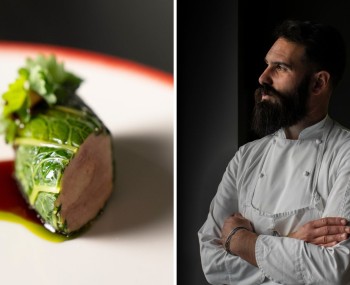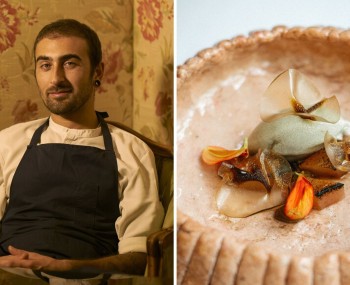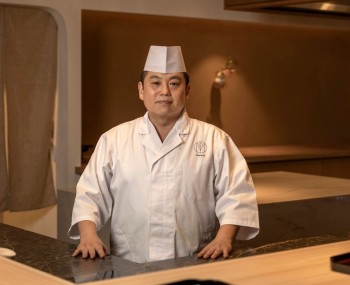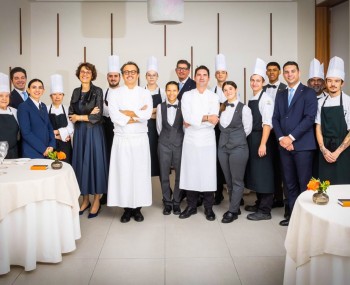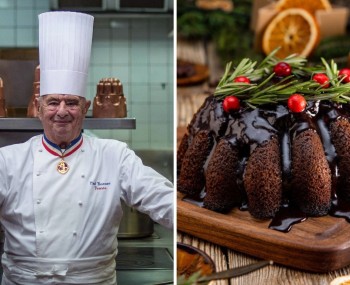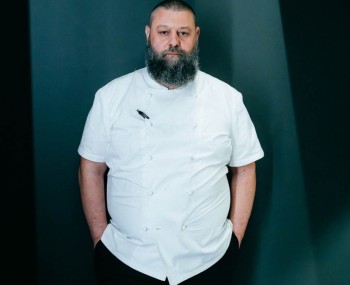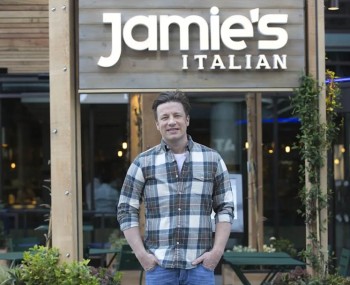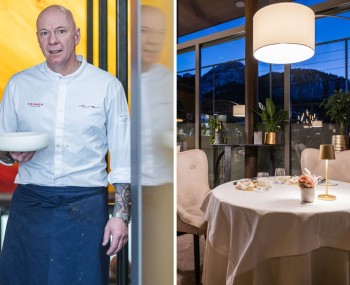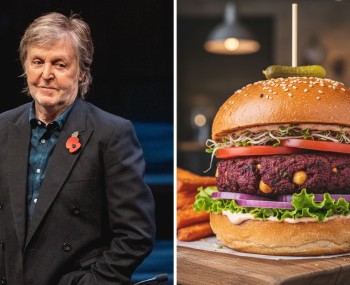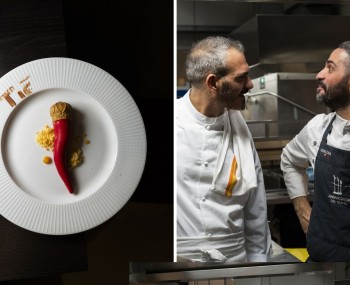A forward-looking gourmet haven: Giuseppe D'Errico's vegetable research has propelled La Madernassa to a prominent position in We're Smart, the guide that honors the top hundred restaurants globally for green cuisine. We asked the chef about how he sources and uses ingredients, from working in the garden to using Koppert Cress products.
The venue
Along the hills on the border between Langhe and Roero, Guarene is one of those places where it's always a pleasure to arrive, difficult to leave once accustomed to the landscape and tranquility enjoyed while staying at Casa Lora, just a short walk from the green oasis that is La Madernassa.
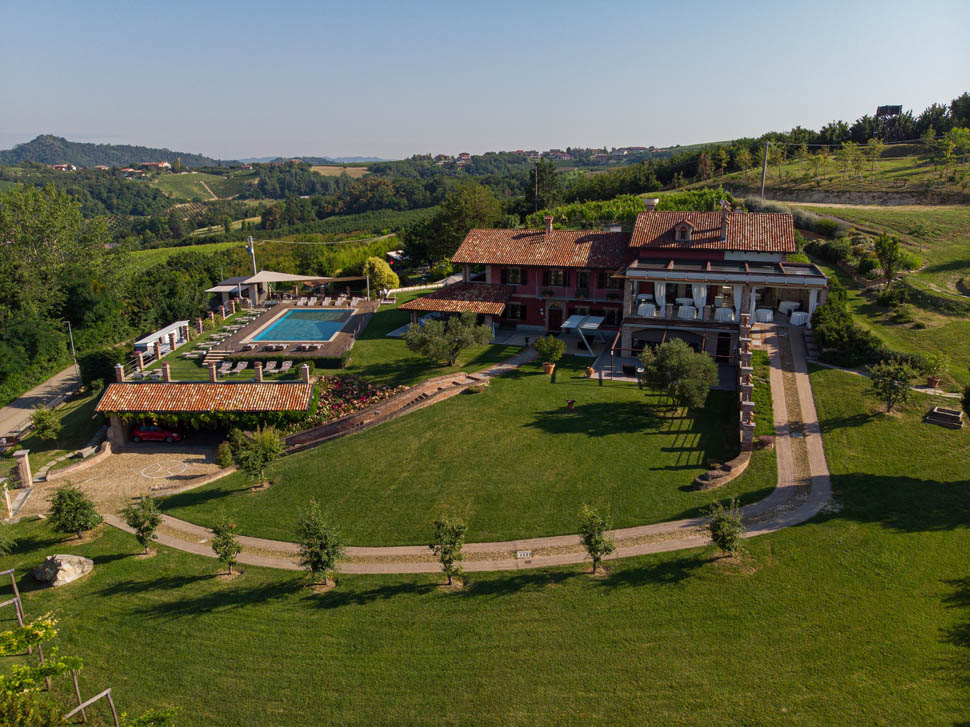
In fifteen thousand square meters, surrounding the building that houses the restaurant, you'll find greenhouses, vegetable gardens, vineyards, fruit trees—a small paradise. Born almost by chance from an idea of Fabrizio Ventura, then a photographer and journalist, what was supposed to be the location of his studio over time became, due to a series of events, first a traditional restaurant and then a gourmet temple known throughout Italy. Ivan Delpiano, the current CEO of the establishment and a tireless coordinator, co-founded it, very aware of the value of a well-organized and cohesive staff.
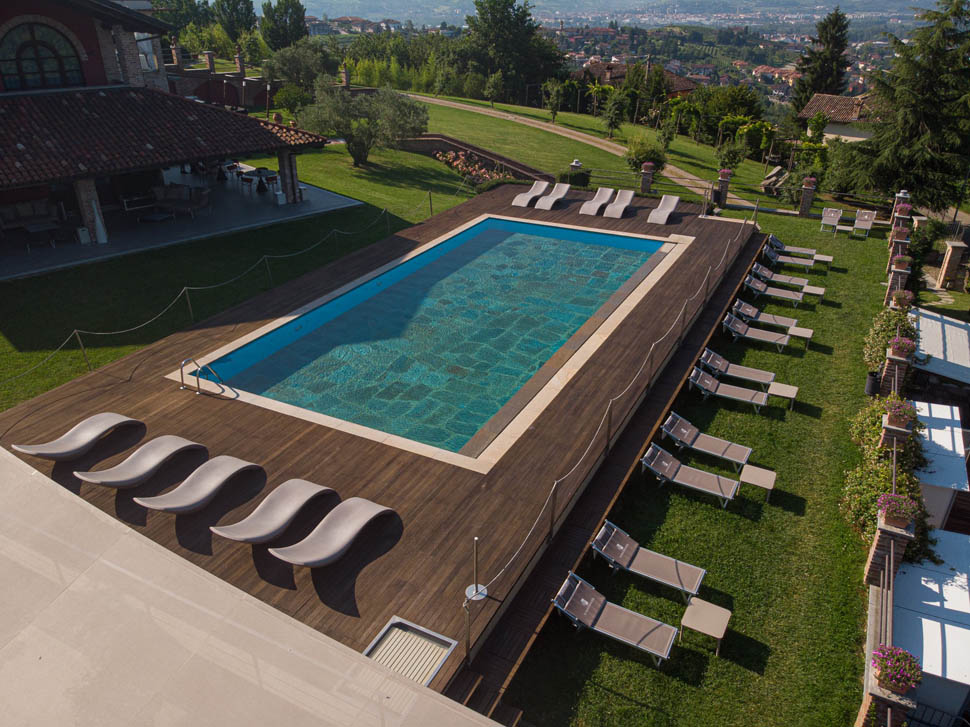
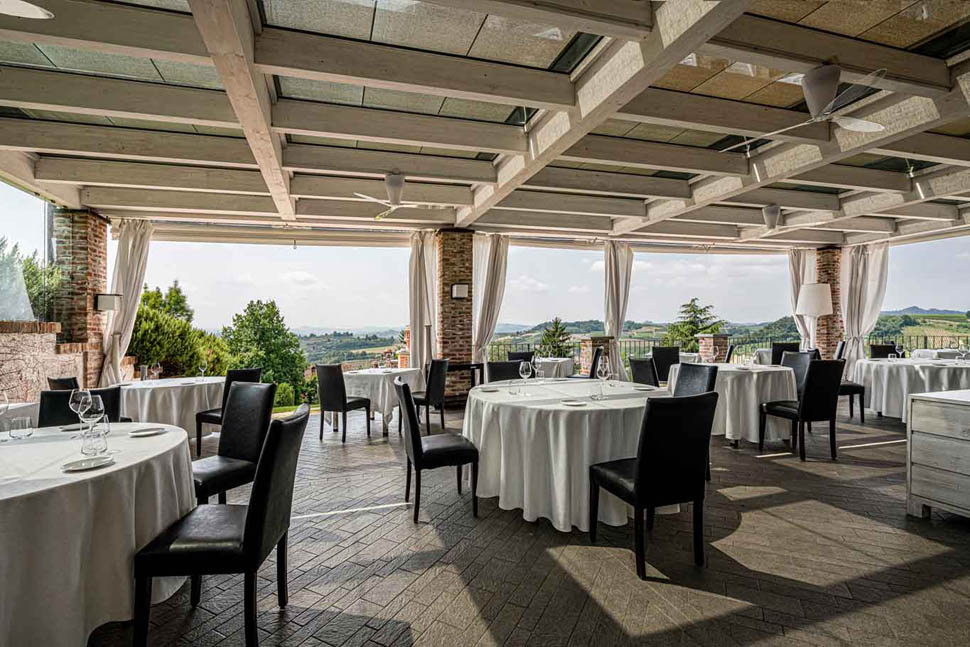
As it is now, with the D'Errico brothers in the kitchen: Giuseppe, the executive chef, a creative and romantic mind, and Francesco, the chef de cuisine, more focused on organization and operations. With them, young people in the kitchen and in the dining area form a team that revolves perfectly around top-notch hospitality.
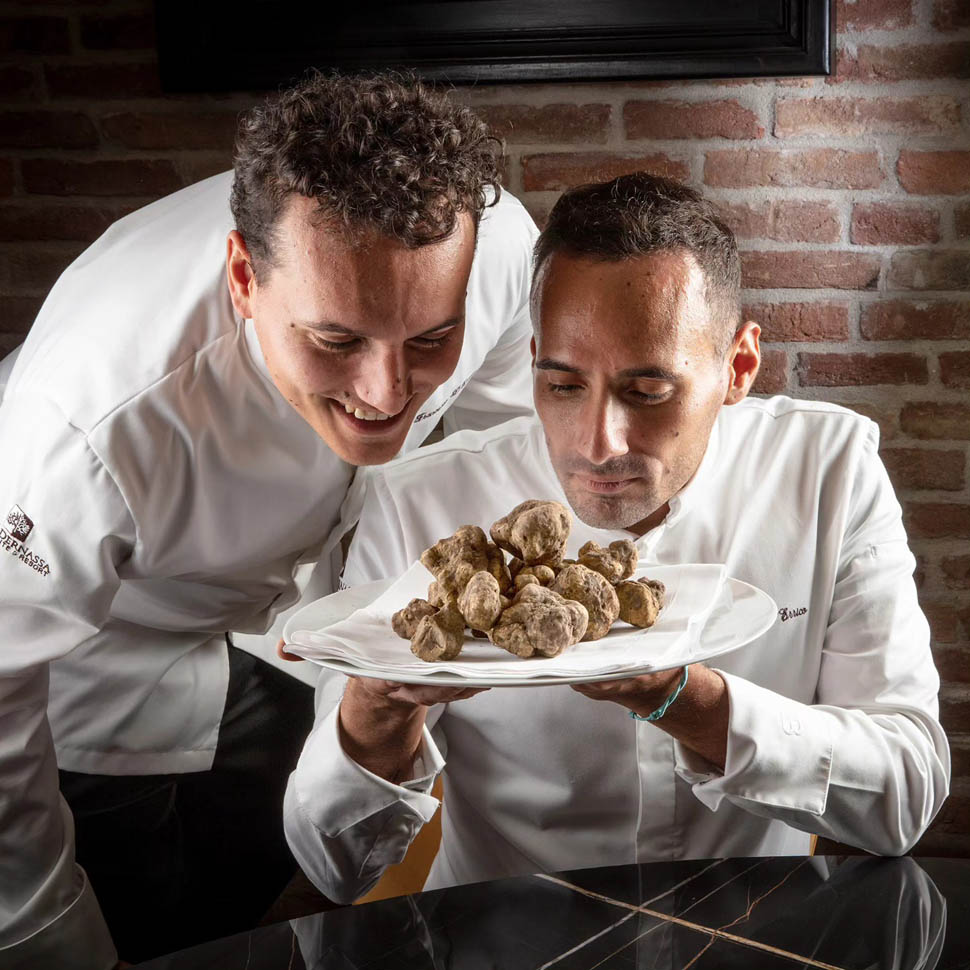
Chef Giuseppe D'Errico
Giuseppe, born in 1987, chose this profession consciously, after scientific studies and a fair amount of apprenticeship. It should be mentioned that his family, engaged in a related world for five generations with a high-quality butcher shop, has a long history. Moreover, his grandmother was a cook on the Lauro fleet ships, and his paternal grandfather had a tavern. So, the path seemed predetermined, as well as the idea of always seeking the utmost, which pervades Giuseppe's spirit: "My family has always conducted an immeasurable search for quality, and at home, we grew up with that value for any product." Giuseppe gains experience in Campania with Antonio Pisaniello between Capri and Nusco, then attends Alma in Colorno, where his admiration for Gualtiero Marchesi is born.
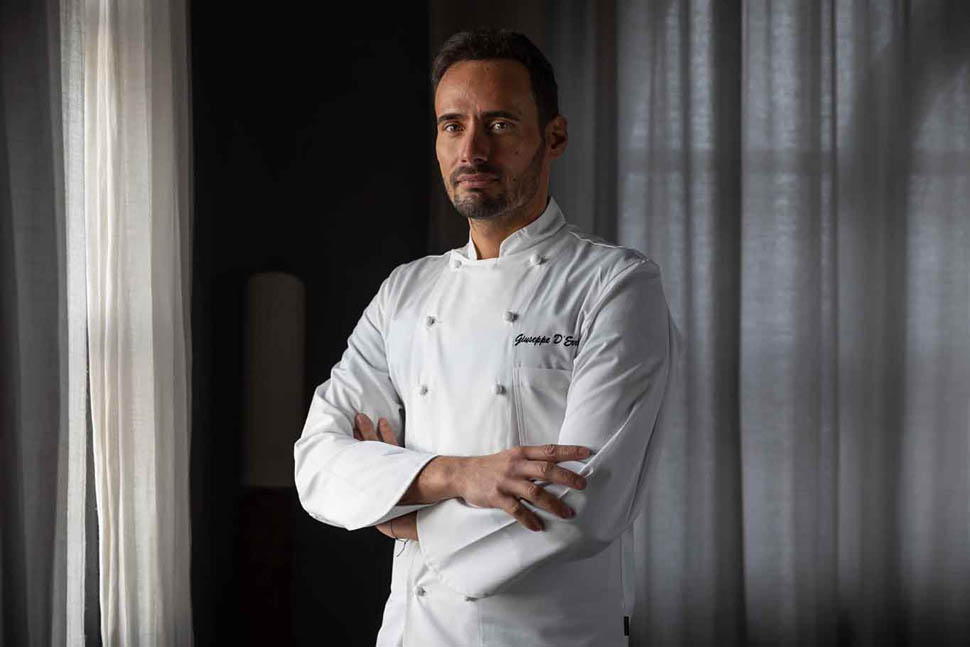
In a way, he follows in their footsteps and sets off for France. With Troisgros in mind, he immediately tries to enter that temple of French fine dining. It's not an easy journey, as before landing his first role in pastry at the bistro, he faces several rejections. However, it doesn't take long for Michel Troisgros to notice his abilities: "From Monday to Saturday, I was at the bistro, and Sunday at the grand maison: it was the most beautiful day of the week for me." Commis, head of the hot fish station, sous chef in the same section that had been Paolo Lopriore's, a progression culminating in a test dish that dazzles the chef and is included in the Grand Menu: it was mackerel with Campari. "Even though, in reality, there was no Campari except for the color. It was a fresh entrée, with a soft jelly, and the mackerel was first steamed and then grilled, with the bitter notes given by infusions of citrus blends and gentian, but without alcohol."
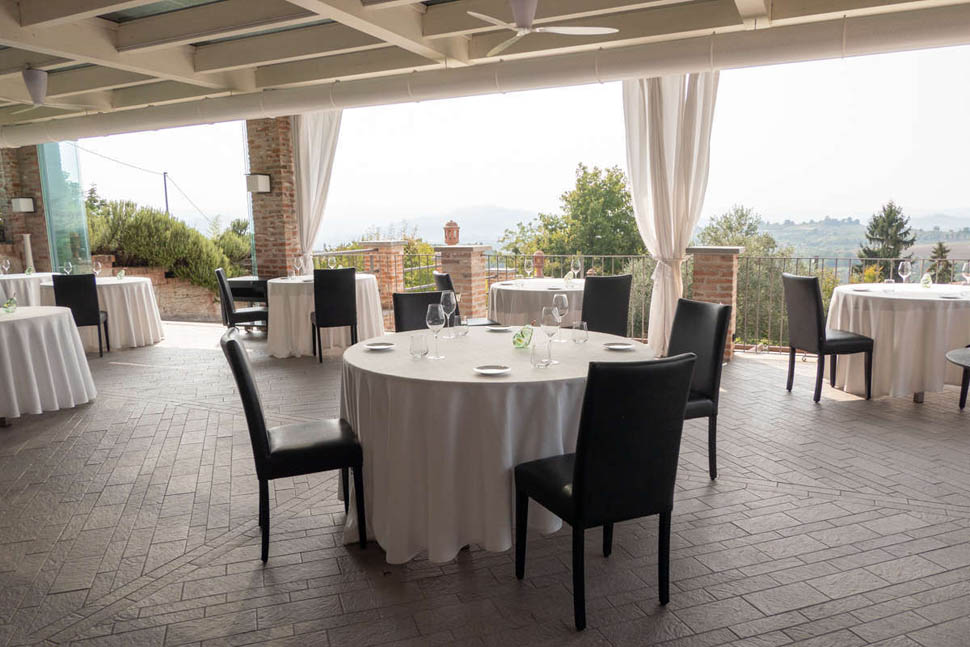
So, at the age of twenty-five, D'Errico becomes the sous chef at Maison Troisgros. There, he learns a lot, between methods and high standardization that allow managing significant numbers at very high levels. Giuseppe stays in France for six years, developing a deep personal relationship and contributing to the project of relocating the headquarters from Roanne to Ouches. Having moved to Zurich as the executive of Ristorante Ornellaia, he quickly earns the Michelin star. The strategies undergo an equally abrupt change, and before arriving in Guarene, Giuseppe spends some time as a consultant and private chef.
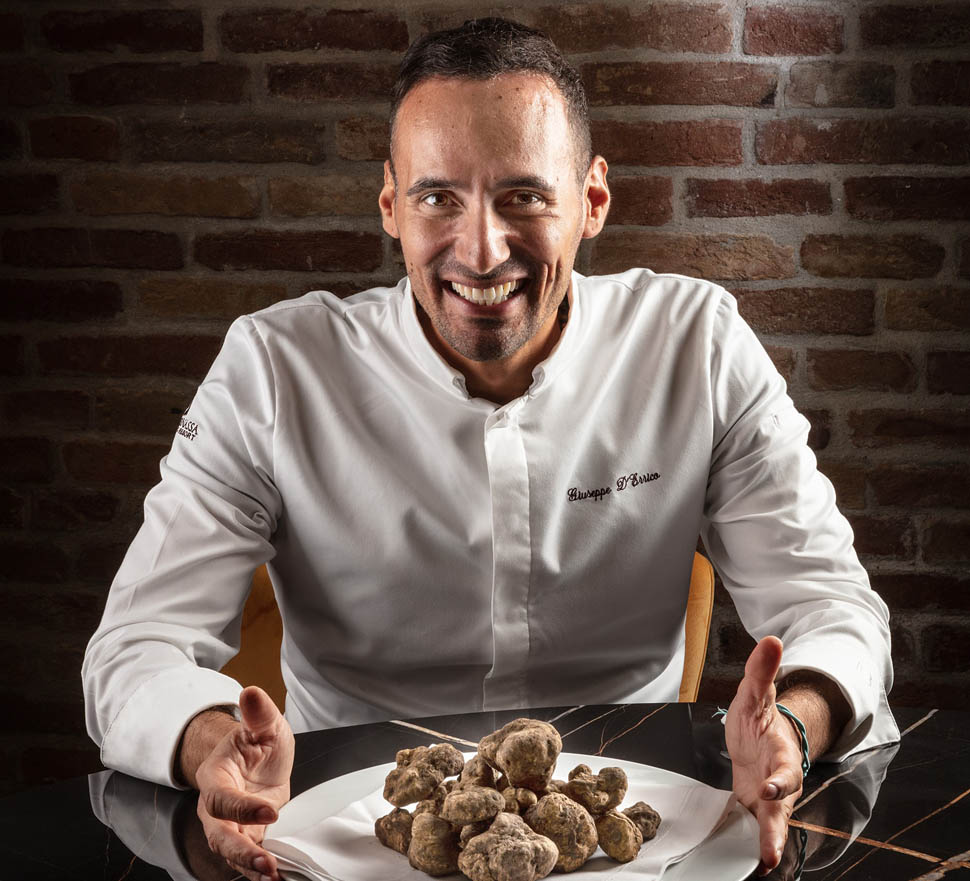
Chatting with him, what clearly emerges is that the time has come to separate a fundamental and foundational learning experience with Troisgros from how he feels now. Giuseppe D'Errico is indeed a mature chef with his own precise identity and a happy dynamism reflected in his dishes, which are elegant and, at the same time, full of personality.
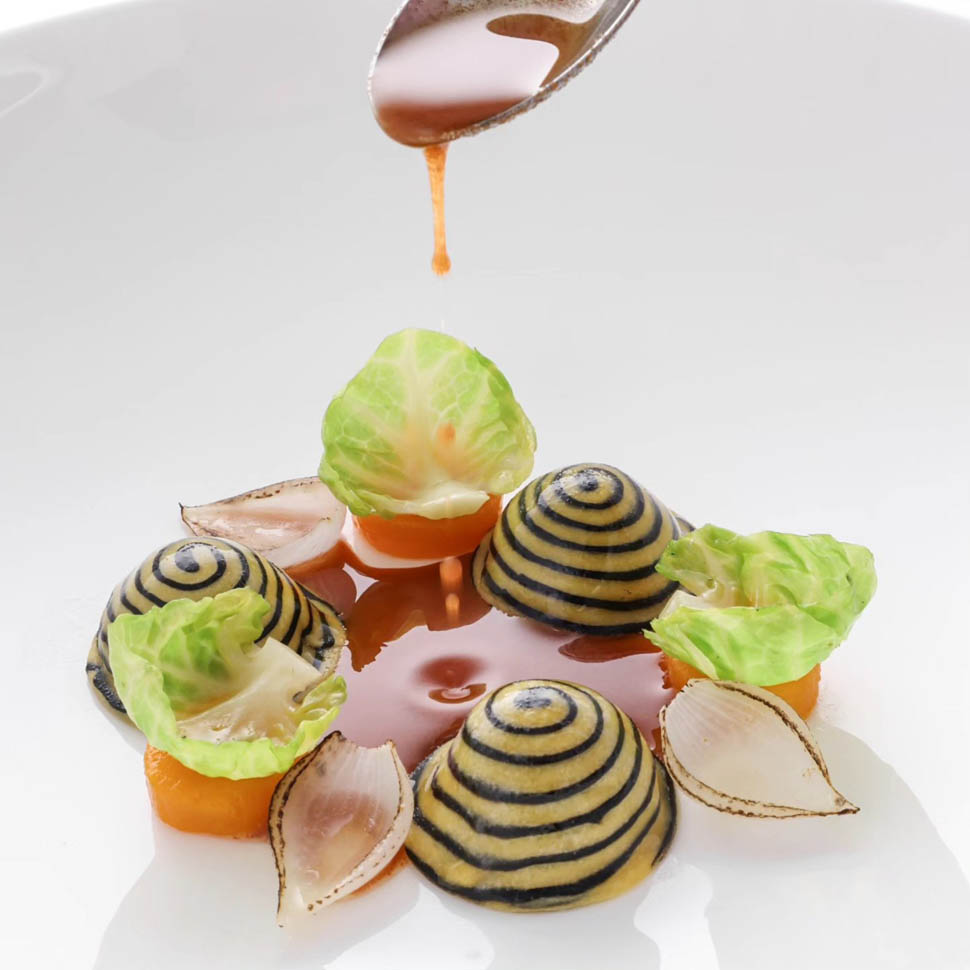
Plates in motion: "I have always been talked about in the context of my experience with Troisgros, but now I am creating a comprehensive cuisine, entirely my own. In a nutshell, I’m trying to be more and more distinctive and recognizable. This has been happening from Zurich onwards and, in fact, it happens to everyone who over time becomes big in the culinary world. A bit like a singer's voice, its tone and characteristics: it must be unique. What we are trying to do here is build a culinary philosophy that brings together many voices and draws inspiration from an important territory. Fundamental is the love for what one does."
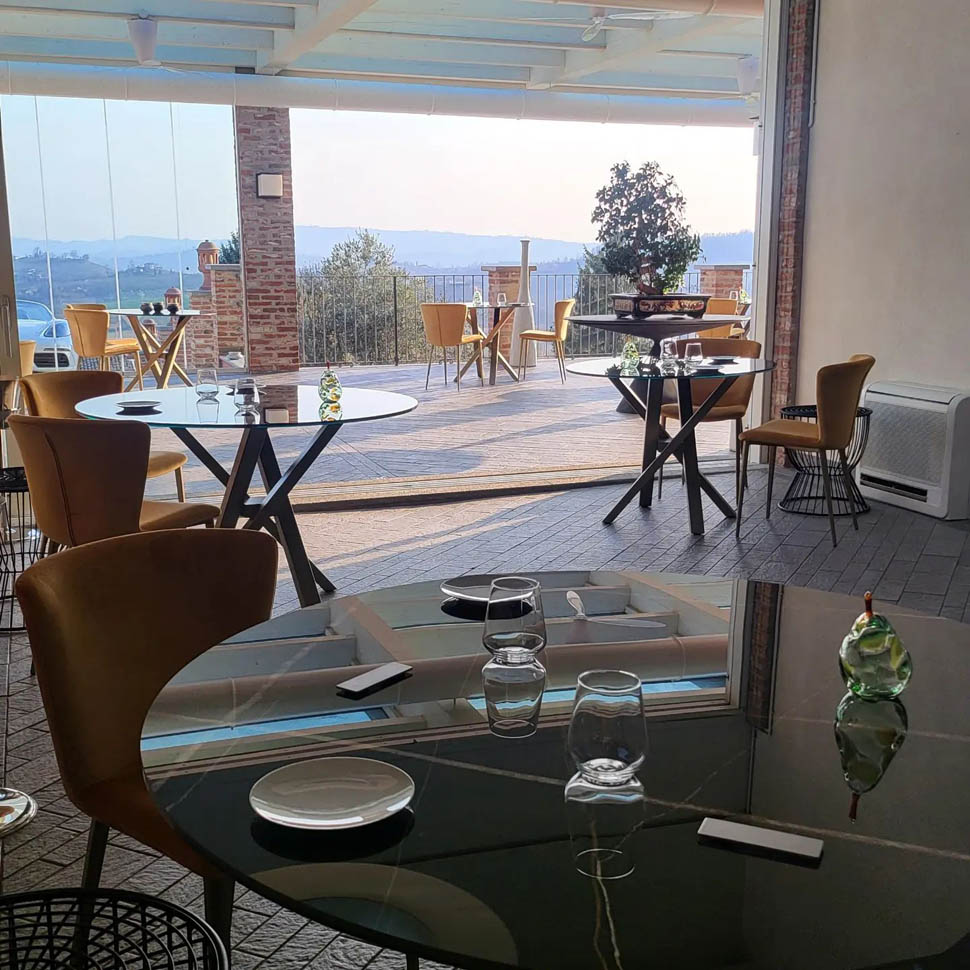
La Madernassa, a "gourmet green"
For example, dedicating efforts in the kitchen to environmental conservation is evident in the great emphasis on vegetables sourced from the extensive on-site garden, always a central element in the menu based on the season. Obviously, anything that cannot be sourced in terms of ingredients is purchased based on sustainability criteria. In this regard, it is worth noting that La Madernassa has achieved an admirable result this year as well, securing the 55th position in We're Smart, the guide that honors the top 100 restaurants globally for vegetarian cuisine and creative use of seasonal ingredients.
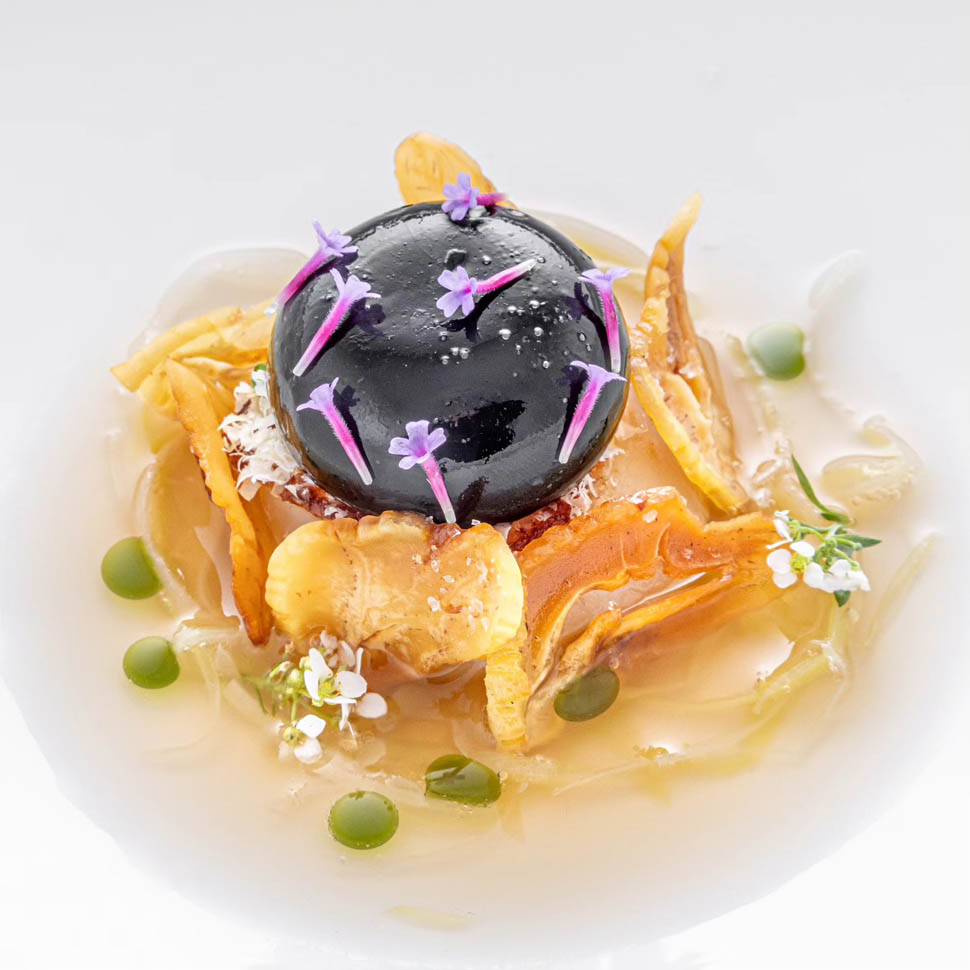
Regarding this aspect, Giuseppe points out how it is impossible to rely entirely on the garden: "For instance, oyster leaf is challenging to cultivate, and even when we tried, the yield is not very high, and it would take up too much space just for that. Thinking comprehensively and wanting to cover as much as possible with what we have at home, especially during the winter, because naturally in the beautiful season it's easier, we compensate by purchasing from a supplier like Koppert Cress, with constant, continuous, and ethical production. During this period, essential elements like the bitter and spicy notes of dandelion, dill, nasturtium, sea fennel, and samphire are missing in the garden, and we can compensate with products such as Paztizz Tops, Zorri Cress, Sea Fennel, and Salty Fingers."
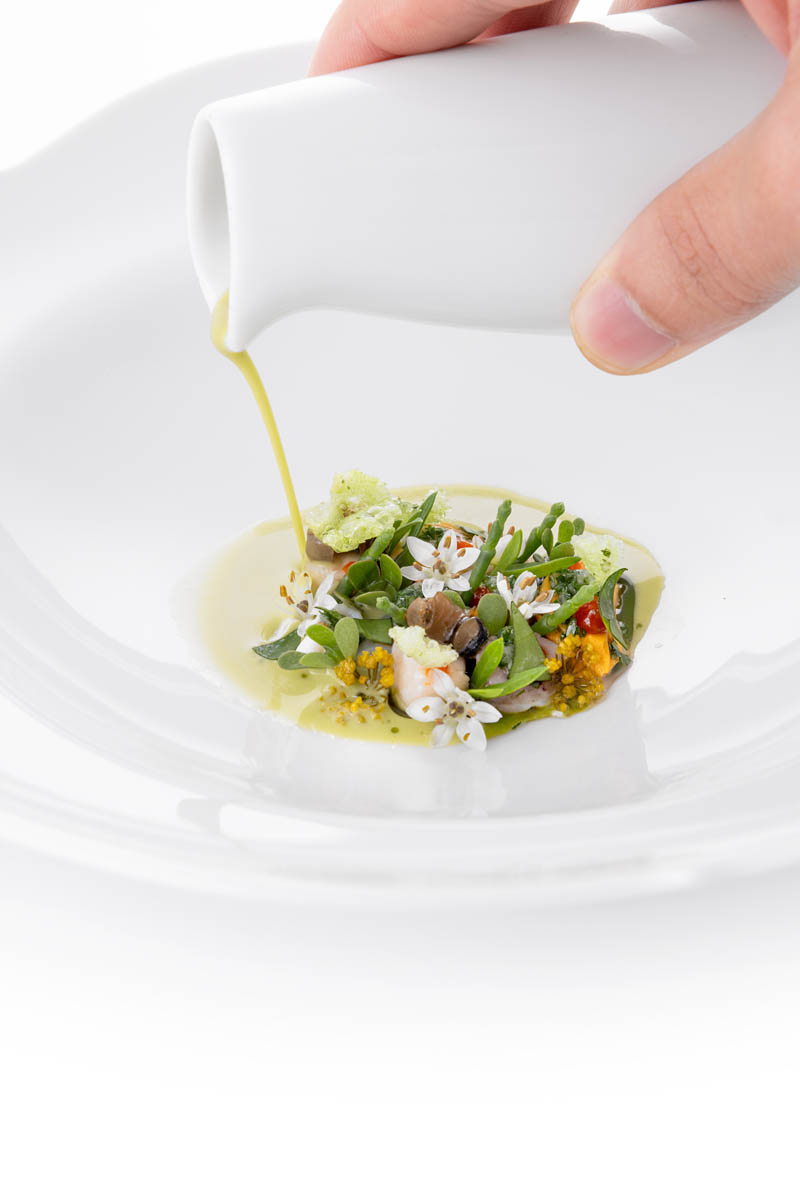
These and other ingredients are used in two dishes where the vegetable element takes center stage. Giuseppe described them, starting with the green salad, literally an explosion of flavors and freshness: "It's a dish that started as a pre-dessert to manage the transition between sweet and savory. Similarly, it can be served as an entrée to pleasantly prepare for the meal. Here, depending on the season, all seasons are featured, from spring to winter. Up to thirty different ingredients are used, with notes ranging from salty to sweet, bitter to acidic, accompanied by a cucumber and green apple sorbet with vinaigrette of green apple extract cut with dill-flavored olive oil. Techniques used in this preparation include pickling, nitrogen spherification, osmosis, and complex marinades. All assembled with harmony and precision, achieving an incredible balance between the different identities of the elements, ultimately distinguishing each individual ingredient."
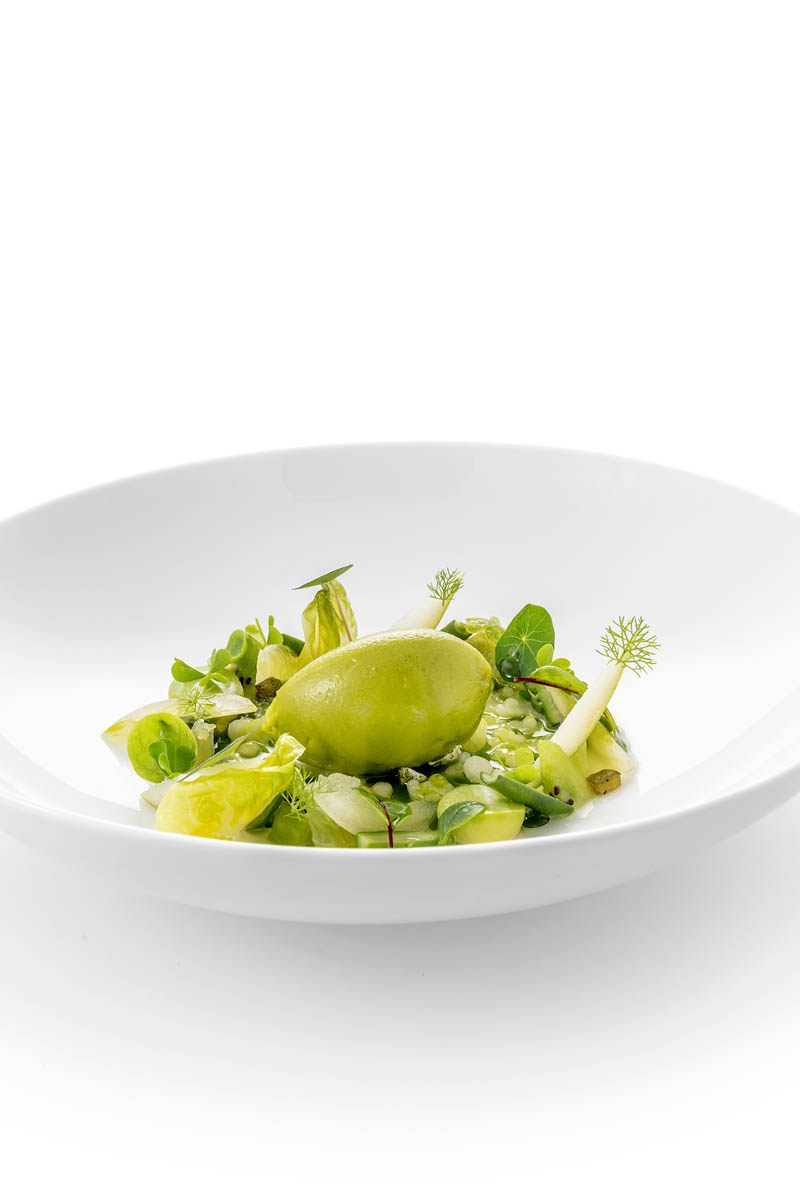
"Mare Nostrum," on the other hand, is "a memory of a return from Sicily and gives the idea of a breath of the sea: in particular, this samphire and fennel sauce treated as if it were a beurre blanc provides a distinct, interesting briny-iodized green note that adds to that of the shellfish. Intense marine components complemented by slightly smoked marrow to lengthen. To finish, herbs and flowers in sweet and sour, marine fennel, and oyster leaf." Gastronomic ideas of profound intensity.
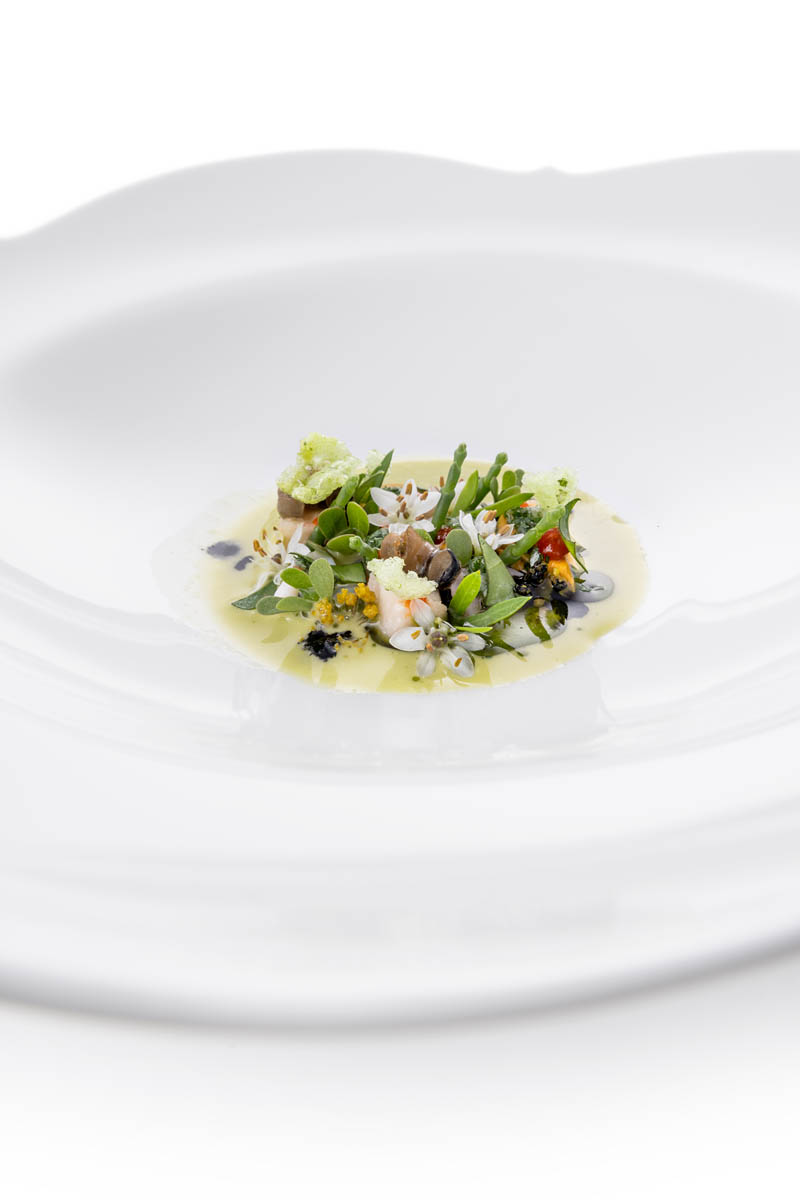
Evergreen Recipe
For the green apple water
Extract and filter the juice from Granny Smith green apples. Bind it with 1.75 grams of gelatin sheets for every 200 ml of green apple juice. Make dill oil in a blender by adding 100 grams of fresh dill and 200 grams of neutral oil, such as grapeseed oil; blend at maximum power and heat to 100 degrees, filter, and cool.
When cooled, separate the remaining aqueous part from the green oil to obtain a perfectly clear oil.
For the vegetable elements of the salad
Peel and dice a kiwi into triangular pieces of the same size.
Peel and segment the wedges of a fresh lime, being careful to create a little flower from the removed peel using a cutter.
Steam a green bell pepper, peel it, and cut it into regular cubes, flame it, season it with salt and pepper.
Slice a very thin slice of green apple with a diameter of 4 cm using a slicer; crush a peeled avocado and season it with extra virgin olive oil, salt, white pepper, and lemon juice to make guacamole.
Blanch the outer green leaves of Brussels sprouts for 20 seconds.
Blanch the tips of Romanesco broccoli for 1 minute.
Blanch the tips of cauliflower for 1 minute. Slice a zucchini very thinly lengthwise, halve it diagonally, and marinate it with a pickling syrup; slice the central shoots of a bunch of wild chicory using a mandolin and keep them in cold water.
In a vacuum-sealed bag, place the central leaves of the head of a lettuce along with cold sparkling water and vacuum-seal at 100% to create an osmosis that will make the leaves transparent and crispy
Greens and Sprouts (to be partially taken from the garden if in season):
- Citra Leaves
- Zorri Cress
- Paztizz Tops
- Small dandelion leaves
- Chinese pak choi cabbage leaves
- Smaller and central leaves of red Swiss chard
For the sorbet
- 200 grams of fresh cucumber with peel
- 50 grams of lime juice
- 3 grams of coriander leaves
- 4 grams of finely grated lime zest
200 grammi di sciroppo così realizzato:
- 125 ml of water
- 50 grams of trehalose
- 24 grams of dextrose
- 1.8 grams of neutral sorbet base
Make the syrup and let it cool positively. When cold, in a blender, combine the syrup with all the other ingredients and blend without allowing it to heat up for a few seconds. Then pour everything into a glass for the Pacojet and freeze it negatively.
For cucumber pearls, extract 100 grams of cucumber juice and 25 grams of lime juice, combine and temper at 30 degrees, add 1 gram of powdered gelatin, pour into a squeeze bottle, and freeze negatively. When the gelatin is formed, drip it one drop at a time into a container with plenty of liquid nitrogen to create frozen cucumber pearls and store them negatively.
Plate composition
A few hours before serving, pour 30 grams of green apple water gelatin into molds and let it solidify in the refrigerator.
Once the gelatin is solid, start arranging the salad by placing all the vegetable elements in a circle on the edge of the gelatin, alternating shapes, colors, consistencies, and heights.
Pacojet the sorbet, and when the salad composition is complete, place a quenelle of sorbet in the center of the plate, and fill the space between the sorbet and the salad elements with a few frozen cucumber pearls.
As a final touch before serving, drizzle a few drops of dill oil (Paztizz Tops) on the gelatin and vegetables.
Mare Nostrum Recipe
Ingredients for 4 people
- 4 mussels
- 4 clams
- 1 slender squid
- 1 Royal razor clam
- 8 sea snails
- 100 grams of lightly smoked marrow
- 100 grams of salicornia juice
- 50 grams of Sea Fennel juice
- 20 grams of Sea Fennel
- 10 grams of salicornia
- 20 grams of Oyster Leaves
- 20 grams of purslane
- 12 sweet and sour fennel flowers
- 10 grams of fresh ginger
- 10 grams of fresh garlic
- 10 grams of fresh parsley
- Sweet fresh chili
- 100 grams of fresh butter
- 10 grams of lemon juice
Method
Open and cook the shellfish using a steam oven.
Cook the marrow in salted water, once cooked, cut it into small cubes.
Arrange the shellfish and marrow in a deep dish.
Quickly stew a finely chopped mixture of fresh garlic, ginger, and sweet fresh chili and season the shellfish and marrow.
Cover the empty spaces with the sweet and sour herbs and flowers.
Serve the golden samphire and sea fennel sauce previously whisked with butter, adjusted for acidity and savor.
*Inspired by Koppert Cress

